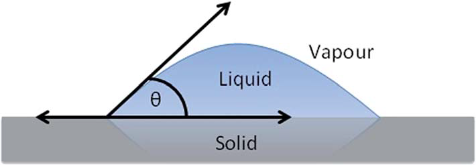The effect of oxygen vacancies on water wettability of transition metal based SrTiO3 and rare-earth based Lu2O3
- National Univ. of Singapore (NUS), Singapore (Singapore). NUSNNI-NanoCore
- National Univ. of Singapore (NUS), Singapore (Singapore). NUSNNI-NanoCore, NUS Graduate School for Integrative Sciences and Engineering
- Massachusetts Inst. of Technology (MIT), Cambridge, MA (United States). Electrochemical Energy Lab.
- Massachusetts Inst. of Technology (MIT), Cambridge, MA (United States). Electrochemical Energy Lab.; Univ. of Milano-Bicocca, Milano (Italy). Dept. of Material Science
- National Univ. of Singapore (NUS), Singapore (Singapore). NUSNNI-NanoCore, Dept. of Electrical Engineering, NUS Graduate School for Integrative Sciences and Engineering, Dept. of Materials Science and Engineering, Dept. of Physics, Faculty of Science
Understanding the structural, physical and chemical properties of the surface and interfaces of different metal-oxides and their possible applications in photo-catalysis and biology is a very important emerging research field. Motivated in this direction, this article would enable understanding of how different fluids, particularly water, interact with oxide surfaces. We have studied the water contact angle of 3d transition metal oxide thin films of SrTiO3, and of 4f rare-earth oxide thin films of Lu2O3. These metal oxides were grown using pulsed laser deposition and they are atomically flat and with known orientation and explicitly characterized for their structure and composition. Further study was done on the effects of oxygen vacancies on the water contact angle of the 3d and 4f oxides. For 3d SrTiO3 oxide with oxygen vacancies, we have observed an increase in hydroxylation with consequent increase of wettability which is in line with the previous reports whereas an interesting opposite trend was seen in the case of rare-earth Lu2O3 oxide. Density functional theory simulations of water interaction on the above mentioned systems have also been presented to further substantiate our experimental findings.
- Research Organization:
- Lawrence Berkeley National Lab. (LBNL), Berkeley, CA (United States). National Energy Research Scientific Computing Center (NERSC)
- Sponsoring Organization:
- USDOE Office of Science (SC)
- Grant/Contract Number:
- AC02-05CH11231
- OSTI ID:
- 1492050
- Journal Information:
- RSC Advances, Vol. 6, Issue 110; ISSN 2046-2069
- Publisher:
- Royal Society of ChemistryCopyright Statement
- Country of Publication:
- United States
- Language:
- English
Web of Science
Similar Records
Direct observation of oxygen-vacancy-enhanced polarization in a SrTiO{sub 3}-buffered ferroelectric BaTiO{sub 3} film on GaAs
Direct observation of oxygen-vacancy-enhanced polarization in a SrTiO3-buffered ferroelectric BaTiO3 film on GaAs






